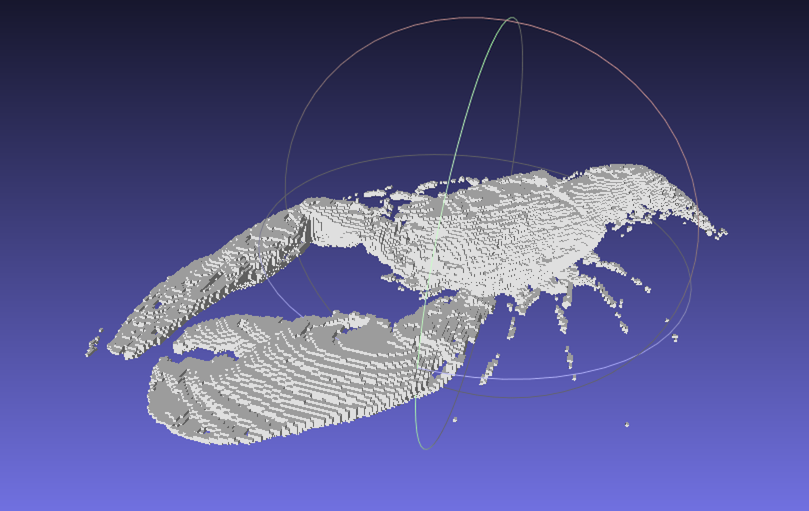volBoundary2obj
Export the boundary of a volume file to OBJ format. By default the resulting mesh is defined from the surfels of the surface elements, a triangulated (dual)
Usage: converters/volBoundary2obj [OPTIONS] 1 [2]
Allowed options are:
Positionals:
1 TEXT:FILE REQUIRED vol file (.vol, .longvol .p3d, .pgm3d and if WITH_ITK is selected: dicom, dcm, mha, mhd). For longvol, dicom, dcm, mha or mhd formats, the input values are linearly scaled between 0 and 255.
2 TEXT output file (.obj or .off).
Options:
-h,--help Print this help message and exit
-i,--input TEXT:FILE REQUIRED vol file (.vol, .longvol .p3d, .pgm3d and if WITH_ITK is selected: dicom, dcm, mha, mhd). For longvol, dicom, dcm, mha or mhd formats, the input values are linearly scaled between 0 and 255.
-o,--output TEXT output file (.obj or .off).
-m,--thresholdMin INT=128 threshold min (excluded) to define binary shape.
-M,--thresholdMax INT=255 threshold max (included) to define binary shape.
--rescaleInputMin INT=0 min value used to rescale the input intensity (to avoid basic cast into 8 bits image).
--rescaleInputMax INT=255 max value used to rescale the input intensity (to avoid basic cast into 8 bits image).
-c,--customDiffuse UINT=[230,230,230,255] x 4
set the R, G, B, A components of the diffuse colors of the mesh faces.
-t,--triangulatedSurface save the dual triangulated surface instead instead the default digital surface.
Example:
$ volBoundary2obj $DGtal/examples/samples/lobster.vol out.obj -m 80
You should obtain such a visualization:

resulting visualisation.
- See also
- volBoundary2obj.cpp
 1.9.1
1.9.1